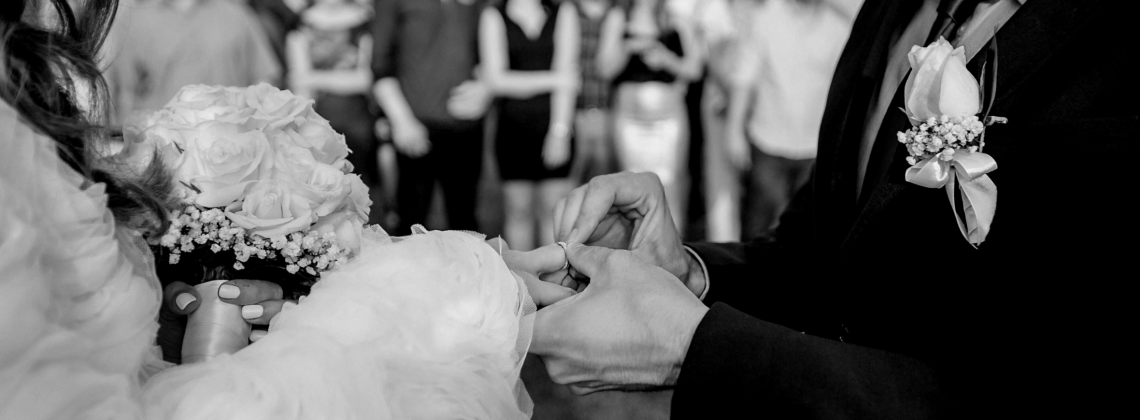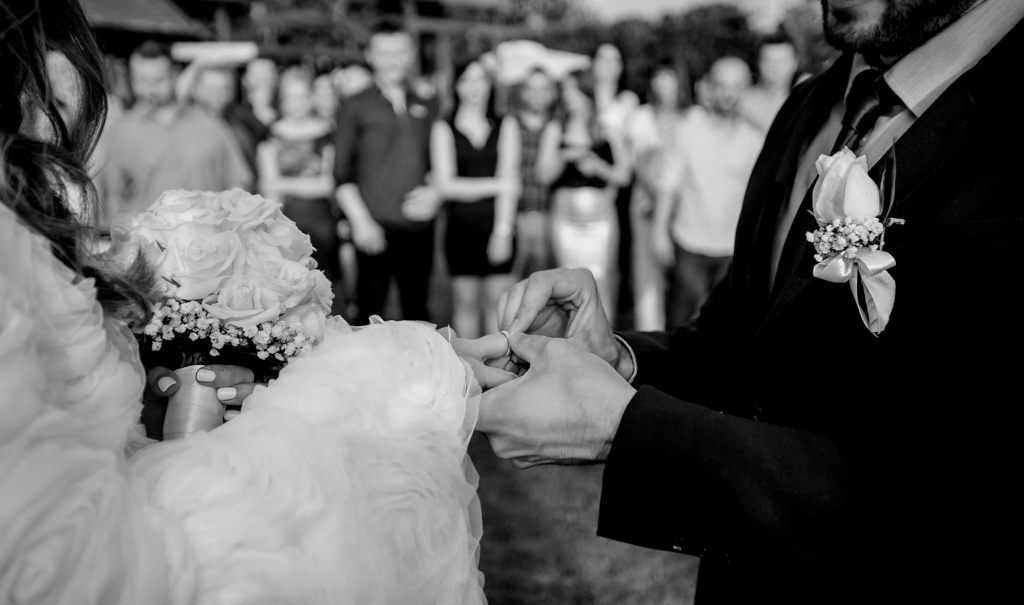

Union and reunion dance, even in pandemic times
1.
The governor’s edict arrives nine days before the wedding. “New Protective Mitigation Efforts to Put Pennsylvania on Pause through Early January,” announces the state on December 10. Upon hearing the words, the bride, who has just picked up her newly fitted gown but not yet tried it on, falls to the floor. The dress lies untouched, empty.
Anguished conversations with the pastor, who has known the couple since childhood, follow, and then a compromise: fifty guests granted entry into the aged stone church, as sturdy as the middle class that built it. Through this portal the couple came together many years past. In it their life together will begin.
The absences gather like ghosts: a grandmother, virus-stricken. An uncle and cousin, isolated in London. Friends, disinvited or afraid. But those present gather like presents, in overcoats and masks and sweaters, gray sky above transmuted to color within, the stained glass blearing the stain of disappointment and disarray. One grandfather of the groom leads the liturgy, the other gives a homily. The bride, radiant with life, with longing, steps lightly to the front and to the future.
The night before we had dined on the sidewalk in that cozy December town, snow on the ground. The two sat surrounded. Blankets covered our legs and scents seasoned the air—wedding soup, wine, parmesan. And laughter, too, joy as bright as the yuletide street. We offered our speeches, toasts, kisses, hugs. It’s like a movie, said more than one.
Indeed, it was, a Christmas romance. And no stage in sight but the world itself.
2.
Nine months pass, and it is the first Sunday of autumn. My wife and I drive to a farm awash in equinox hues—brilliant greens, touches of yellow and red, sunshine gold. We are amazed. We had lived twenty minutes away once, never knowing we were at the gate of paradise.
The farm (turned venue) features acres of mowed grass, paths through the woods, and a pond, gazebo, farmhouse, barns. We take a hayride to the outdoor chapel and sit easily with friends, the strings in the air a musical breeze whispered through the woods.
The bride arrives, and the familiar happy hush. She is lovely, imbued with a smile that bursts from her eyes. We have watched her grow and now see her grown, transfigured, and we sit rapt, awed by youth and age flowing forth in this space of grace. Beneath a garland of pinks, greens, and blues the two take their vows and pledge their oaths, a song blending enchantment and duty with holy ease.
The maid of honor took ill the day before. But at the reception we listen to her digital speech and savor the affection, the love that swells as voices and glasses are raised. It’s a dance that has long been happening, we see, so dancing there must be, shouts of jubilation. “Shake it up, baby! Twist and shout!”
We drive home, hours away, and talk into the night about all we’ve seen everywhere we’ve been over these winding years. The next evening as I mow the lawn the scenes roll unbidden through my mind, in vivid color and sound—the glowing couple, the enchanted place. Another movie, another hope. Was it real? Was it all too real?
3.
Thanksgiving comes, but not without a wedding just before. I make the journey with my brother and our nephew, the brother of the groom, and it is a moveable feast, beginning with salsa and burritos at the strip mall where I join them and ending with a destination wedding at the childhood home of the bride, 400 acres of farmland in the northern November countryside. We arrive on wedding eve.
In the house that night I suddenly see what a wedding is: It is union, and it is reunion, each feeding the other’s flame. Now the bride laughs with her sister, as the groom chuckles with friends. His father grills sandwiches while hers plays host. Merriment and festivity are not too fine words for this moment. We warm to a glow we did not make.
The next morning we gather on the bank of a pond on the edge of the woods, forty degrees of chill no match for the sunshine we bring and receive. The bride and groom exchange rings. And they tie a knot, an actual knot, somehow, chuckling all the way, a bright cord of hope encircling them, encircling us. We laugh with a calm that flows from the deep. Peace on earth.
Later, after speeches and toasts, a second climactic moment takes place. The great-aunt of the bride steps forward with a gift. She, a genealogist, unveils a twelve-foot, hand-written scroll that charts the histories of the families being joined together. As the story unrolls before us, she announces that the bride and groom are tenth cousins—and that their common ancestor is the grandfather of Daniel Boone!
Another movie? No. This is an odyssey we are living, all of us, the dense, textured way of human souls on this tender earth, moving on paths hewn together, paths that make us one. For a time.
My brother and nephew and I depart an hour later, as elation settles in. All the way back we talk about old friends, updating each other on their lives. Some stories are rich, laced in love. But many reveal lost trails, paths abandoned when peace didn’t come, or didn’t stay.
Alone in my car on the journey’s last leg, I find myself shaken by a question that has been building through the year. It will not leave.
How can we honor such tender oaths, vibrant longings, precious hearts?
Eric Miller is Professor of History and the Humanities at Geneva College, where he directs the honors program. His books include Hope in a Scattering Time: A Life of Christopher Lasch, and Brazilian Evangelicalism in the Twenty-First Century: An Inside and Outside Look(co-edited with Ronald J. Morgan). He is the Editor of Current.